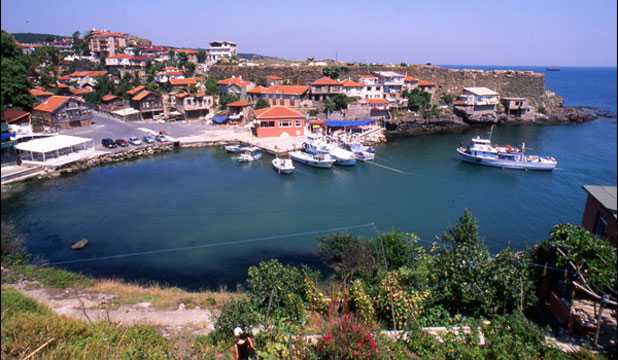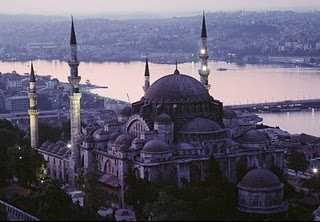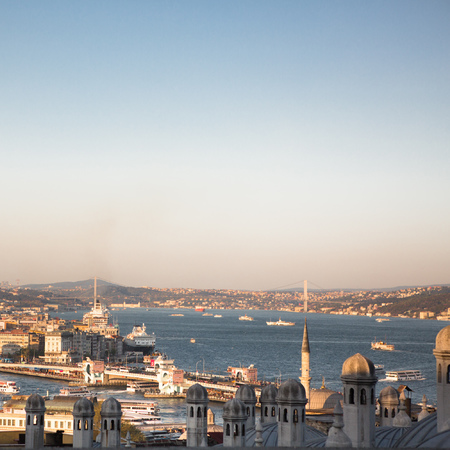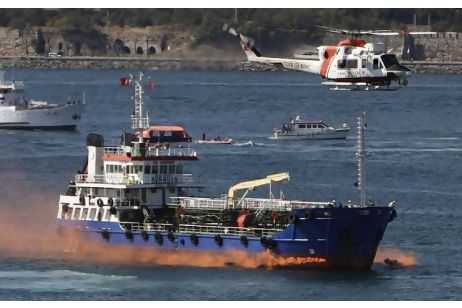By Jim Eagles
Jim Eagles cruises down the watery divide between Europe and Asia.
Ortakoy Mosque, built by an Ottoman sultan, is a vision of wealth and power. Photo / Jim Eagles
In less than a minute I had passed from Europe to Asia. There was no need for my passport to be stamped and no customs inspection … though the driver did have to pay a small toll.
To move from one continent to another we simply drove across the elegant 1075m-long Bosphorous Bridge while still remaining in Turkey.
The land on either side of the narrow strip of water dividing Europe from Asia, and linking the Mediterranean with the Black Sea – comprising the Dardanelles, the Sea of Marmara and the Bosphorous – has throughout history been one of the most strategically important, and therefore highly prized, points in Eurasia.
Mehmet Kayici, the archaeologist who guided me around Istanbul, said historians knew of no fewer than 48 attempts to conquer the area. One of the earliest saw Darius the Great, King of Persia, build a bridge of ships to take his forces across the narrow Mediterranean entrance, with the exploit commemorated in the name Dardanelles.
And a more recent attempt involved Anzac troops who, among others, landed at Gallipoli in an ill-fated attempt to allow Royal Navy ships to pass through those straits to the Black Sea.
Given all that history, it is hardly surprising that the shores of the Bosphorous, in particular, are lined with beautiful and historic buildings – mosques and palaces, watchtowers and castles – as well as the homes of the modern elite.
You can explore that panorama by land or by sea, but preferably by both, which is what I did.
Istanbul Seabuses’ Bosphorous Cruises are obviously a popular way to see the sights, because the ferry I went on was packed and I had to keep my elbows at the ready to preserve my viewing point on the top deck.
The cruises start from Old Istanbul, a peninsula which has housed human settlements for at least 9000 years and has served as capital of the Roman, Byzantine, Latin and Ottoman Empires.
The many ancient monuments to see there include the massive shape of St Sophia, the Sultan Ahmed Mosque, the old Roman city walls and the Tokapi Palace.
A little way down the coast the elegant shape of the Galata Tower, built by Genoese traders in 1348, rises above the amiable clutter of city buildings.
Then we cruise past the 600m frontage of the Dolmabahce Palace, summer residence of the sultans, built in the 1850s when the Ottoman rulers had begun to find the Tokapi Palace in the middle of the city too restrictive.
It’s an imposing sight, a suitable statement of wealth and power, but rather more beautiful is the nearby Ortakoy Mosque, built around the same time but these days sharing the seafront with the supports of the Bosphorous Bridge.
On the opposite (Asian) side of the Bosphorous I saw more impressive Ottoman buildings, including the white marble Beylerbeyi Palace and the smaller Goksu Pavilion, which sounded as though it was a sort of royal bach.
But our cruise continued mainly down the European side which was lined with wooden Ottoman houses. These charming homes were originally built by members of the extended royal family, ambassadors and courtiers, however today, according to Mehmet, they “are owned by rich people – the cheapest price would be US$5 million ($6 million) – who commute to the city in their speedboats”.
Further down the Bosphorous we came to the second of the two spans linking Asia and Europe – the Fatih Sultan Mehmet Bridge and beside it, rising up the hillside, the ominous bulk of the Rumelian Castle, built by the Ottomans in 1451 while they were laying seige to Constantinople.
As the cruise continued I saw at the end of the Bosphorous, sitting astride a tall hill, the powerful shape of the Yoros Castle, built in Roman times to guard the entrance to the Black Sea.
But before we got there, I left the ferry to continue my exploration by car.
This allowed me to check out the extraordinary luxury of the Beylerbeyi Palace which seemed, from the commentary offered by the official guide, to have been used by the royal family for bathing excursions from their larger summer palace.
It was also a chance to visit the viewing point of Chamlica, from which there are fabulous views across the water to Europe, and to enjoy the sight of dozens of families having picnics under the trees.
However, the best thing about circling the Bosphorous by car was the fact that it allowed me to cross the Mehmet Bridge, from Europe to Asia, and the Bosphorous bridge, from Asia back to Europe, all in a matter of minutes.
CHECKLIST
Getting there: Singapore Airlines operates 12 times a week between Auckland and Singapore and then on to 62 destinations in 34 countries, including Istanbul.
Getting around: World Expeditions’ Best of Turkey includes Cappadocia, famous for the underground cities and extraordinary rock formations, Konya, known for its whirling dervishes, and the historical cities of Ephesus, Troy and Gallipoli as well as Istanbul. Call 0800 350 354.
Jim Eagles visited Istanbul with help from Singapore Airlines and World Expeditions.
via The Bosphorous: Tale of two continents told at sea – Travel – NZ Herald News.





